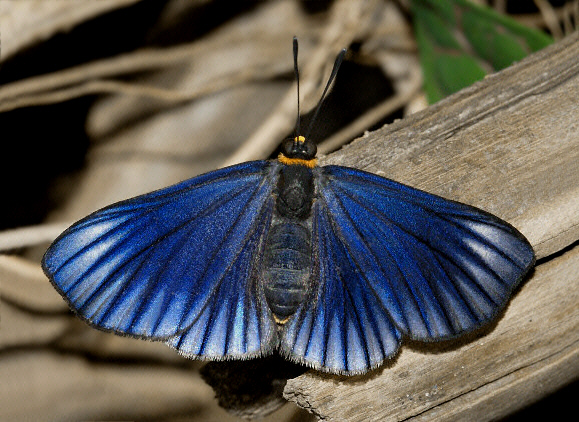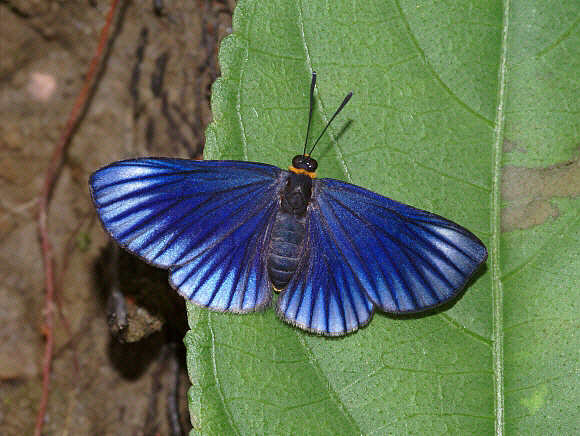 Xenandra poliotactis, Rio Alto Madre de Dios, 550m, Peru – Adrian Hoskins
Xenandra poliotactis, Rio Alto Madre de Dios, 550m, Peru – Adrian Hoskins
Introduction
This stunning butterfly was photographed on a misty August morning on a river beach on the Rio Alto Madre de Dios, bordering Manu Biosphere Reserve, in Peru. It is not illustrated in any published book, so aroused a great deal of interest amongst the many eminent entomologists consulted in the course of getting it identified. I’m very grateful to Andrew Neild, Keith Willmott, Tony Hoare, Blanca Huertas, Gerardo Lamas, Bernard d’Abrera, Curtis Callaghan and Jason Hall for finding the time to examine the photographs reproduced on this page.
Some of us were speculating that this could be an undescribed new Esthemopsis or Lepricornis, or possibly even an undescribed genus, but Gerardo Lamas was the first to suggest that the butterfly might be a species of Xenandra, and this was later confirmed by two Riodinidae experts.
Callaghan identified it as Xenandra poliotactis, and Jason Hall remarked that in his many years as a neotropical Riodinidae specialist he had ‘seen only a handful of specimens’. He also noted that ‘the dorsal surface varies slightly from a dull black with little blue in worn specimens to a brighter blue in fresh ones’. Bernard d’Abrera understandably expressed concern that I had not captured and killed the butterfly and brought it back for study, as it could so easily have turned out to be a new species to science. It was reassuring however to be reminded by another friend that it would be against my nature to kill, and that I should stick with what I enjoy doing most – studying living butterflies, and using this website to encourage others to appreciate them as beautiful living creatures.
 Xenandra poliotactis, Rio Alto Madre de Dios, 550m, Peru – Adrian Hoskins
Xenandra poliotactis, Rio Alto Madre de Dios, 550m, Peru – Adrian Hoskins
The butterfly appears to be a female, with the abdomen distended by the eggs within.One very notable feature of this species is the fact that the thorax and head are devoid of scales except for the yellow-orange “ruff”, and the palpi. When seen in life this gives the butterfly a very unusual “un-lepidoptera like” appearance that cannot easily be conveyed in a photograph. I do not know of any other genus of butterfly or moth in which the thorax is completely bare.
Habitats
The butterfly was found on the shoreline, behind which was lowland tropical rainforest, including areas of bamboo and secondary growth. Altitude believed to be circa 550m. I found the butterfly just after dawn, and it was extremely sedentary, facts which combine to suggest to me that it had flown only a very short distance from its emergence site, and probably breeds in riparian forest.
Lifecycle
Unknown.
Adult behaviour
The butterfly was found very early on a cool and misty morning, at a time when other species were still at roost. It spent several minutes basking on a bit of driftwood on the river beach. It made no attempt to fly when approached closely. When I returned to the same spot half an hour later I found it basking on low foliage about 2 metres away from the original spot.
It is possible that the species only flies on cool overcast mornings, as there was no trace of it in the vicinity later in the day or on subsequent days when the weather was warmer.
